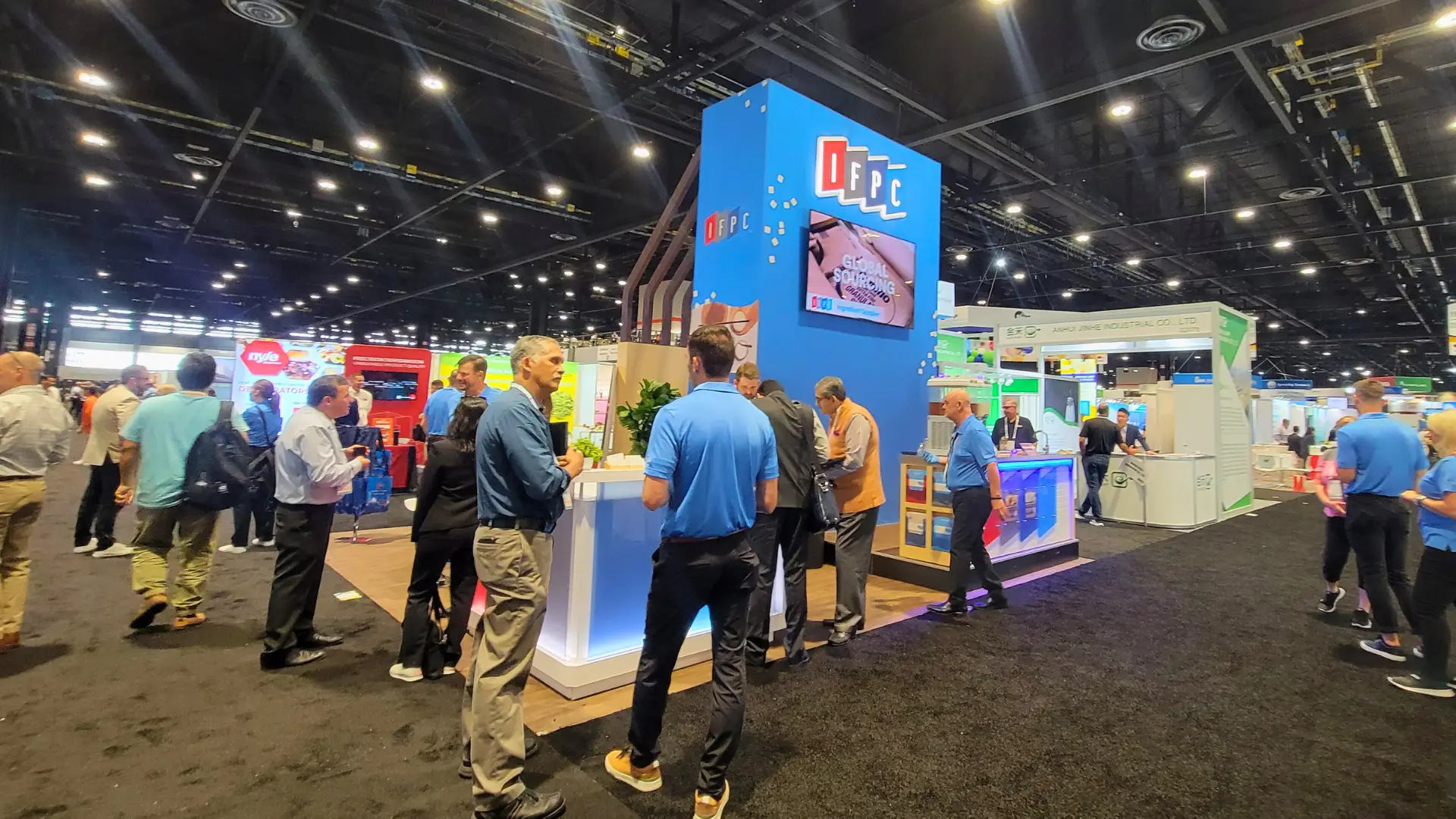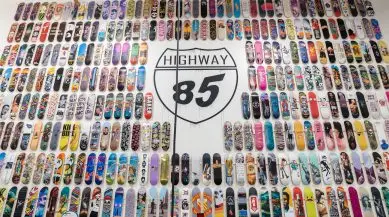You know that feeling. It is that feeling everyone who manages a trade show feels right before every show. That constant feeling that one or several of the million things that can go wrong will go wrong at your upcoming show causing it to be a disaster. Some of these things you can prevent and some you can’t.
From booth damage to staff without hotel accommodations, never fear, help is here! We’re going to help you avoid trade show disasters by covering the most common things that can cause show disasters, and how you can navigate through them.
Determining If the Event Is Right for You
Being at the wrong trade show for your business is the first of many disasters that can happen and is really easy to avoid. Make sure that the trade shows you attend are the right shows for your organization. Disaster will surely occur if you place your company at an exhibition that is not within your industry or niche. There is nothing worse than standing out at a trade show for the wrong reasons, like your company not being the right fit.
Always start with research. Look into trade shows your competitors are attending, you should be attending all of the same shows if your budget allows. Are there any other industry related shows your competition is not doing? Select your trade shows based within your specific industry or niche. Small venues, large venues, no matter the size of the show as long as the fit is right for you. Need some help determining if a trade show is right for your company, we’ve got you covered here.
Plan Early
The best way to avoid trade show disasters it to plan early. Start planning for your show the moment you sign the contract to exhibit. We suggest you create a tradeshow plan with everything you need to make sure you are able to avoid most disasters. For starters, we suggest the following planning outline:
- Trade Show Checklist – This is your list of functions that your company performs for each trade show. Many of these tasks will involve budgets, marketing, show dates, times, and your booth locations. Make sure you have all of your dates nailed down as you do not want to make a date-related mistake on your marketing communications. For more information on what should be in your trade show checklist read our blog about it here.
- Travel & Hotel Accommodations for Trade Show Team – Book early and as soon as you can. Hotel availability always goes fast. It is likely that you and your team will be working long hours at the show, you do not want to be too far from the exhibit hall. Be sure to watch for when accommodation bookings are open. Always try book at the host hotel or the closest to it. Book through the authorized vendors for reliability and the best discounts. There is nothing worse than arriving at a trade show hotel and not having a proper reservation; except maybe your boss arriving and finding issues with their reservation that you were in charge of!
- Shipping & Transportation – The most important function that you need to plan and be on top of for any trade show you do: getting your booth and show materials delivered and set up on time. Late booth or no booth equals certain disaster.
- Venue Shipping Partners – Many venues or trade shows will partner with a shipping company that all exhibitors must use. Be sure to follow all dates and instructions provided to you by the venue and the shipping company.
- Your Shipping Choice – If a shipping partner is up to you to find, finding the right shipping company with expertise in the trade show industry and the transportation of exhibits and materials is imperative to the success of your show. Mistakes often happen when you ship with companies that do not understand the trade show industry. Exhibitor Magazine Online is a good source for trade show shipping resources and here at Highway85 we like Tazmanian and TEAM Worldwide for our shipping needs.
Having A Beautiful Display
Your trade show exhibit display is the fulcrum of your entire show. Having an amazing display can be the single thing that keeps your exhibition afloat should other disasters occur.
Having a display that fits with your company’s brand and personality is essential to the overall success of your trade show presence. Depending on show size and your budget, you may have anywhere from a small pop-up booth to a grand multi-story exhibit space complete with meeting rooms and an espresso bar. Whatever your exhibit size, the graphics on your display need to be done right. They need to be clean and crisp and properly within your brand’s guidelines. If you do not have an in-house design team, be sure to budget for a professional design firm to create your display graphics to ensure they are done to the appropriate display specifications. Your graphics should be something that helps to draw traffic to your booth.
You’ll also want to make sure your exhibit display space is welcoming to trade show attendees. Do not block the entrance to your booth space. Keep open pathways to allow people easy passage into your space. Keep materials to the side and out of the path. Do not place anything large or imposing at the entrance, or block with staff standing there. Remember to always think open and welcoming.
Be prepared to protect your beautiful booth from damages that can occur leading to a show disaster. Displays seem to always rip or get a hole in places we wish they would not, and this usually leads to disaster. We’ll talk more about how to be prepared to avoid and fix any booth damage disasters later on.
Having the Right People in Your Booth
Now that you have a beautiful open and welcoming booth, make sure you have the right team of people operating your booth. The people who represent your company at your booth should be highly qualified and able to answer as many questions about your products or services as they can. They should be familiar with all sales and marketing materials present at your booth and on top of any promotions you are offering at the show.
Avoid using interns and new employees. Most importantly, make sure your booth staff consists of employees who are experts in the trade show niche you’re at. Make sure you consider just how technical an attendee can get with a question. If an attendee comes to your booth with a technical question that requires expert knowledge, having a specialist in that specific field to address the question can be much better than say, a regular marketer/salesperson who doesn’t quite have the same level of expertise. Also, avoid bringing very shy people, you need outgoing people who will approach show attendees and are comfortable talking about your company.
Booth coverage is also very important. Your booth should always be staffed during exhibit hall hours. Your booth staff should also be ready to engage with attendees; make sure you do not have a team on site that hides behind a laptop and a smart phone all day. It’s not a welcoming sight to see a team of people hiding behind laptops and phones, many attendees will just walk right by.
There is nothing worse than a potential customer having a bad experience at your booth because you did not have the right staff present to help them. This is one of the most common and most avoidable trade show disasters, don’t let it happen to you.
Being Prepared
I am sure by now you are wondering, how am I possibly going to be able to prevent most of these trade show disasters from happening? How can I be prepared?
To start, a review of your previous trade shows is an essential part of your planning and being prepared. Reviewing any previous show disasters is the best way to help you prepare for the next show and prevent those disasters from happening again. Previous show experience will help drive the items you place on your trade show checklist and will help you build your “Trade Show Survival Kit”.
Talk to people in your professional network. Ask them about their trade show experiences and any disasters they may have experienced. Sharing experiences with your network is one of the best ways to prevent future show disasters. Learn from each other.
And did we mention duct tape? We talk about the importance of duct tape in our recent blog, Trade Show Survival Kit (To Save Your Ass). Duct tape can fix just about anything and can be used in many situations to prevent trade show disasters. Always have duct tape, always.
So, You Think You’re Ready?
So, you think you’ve got a pretty good plan, right? Just because you have your next trade show all planned out doesn’t mean you’re ready to go. Following a plan alone is not being prepared. It is important to make sure you have gone over everything on your checklist and that you have your trade show survival kit updated and ready to go. Your trade show survival kit will save you from many potential disasters. And duct tape. Did we mention how useful duct tape is?
Lastly, for even more peace of mind, and if your budget allows, the best way to plan to avoid trade show disasters is to hire a trade show professional to provide you with the assistance you need to make your show a success. Having professional help is always the best way to ensure your show is disaster free. Ask your network for referrals and be sure to check references. This is an important role: trade show exhibiting puts your company in a position of high visibility within its industry so your show presence needs to be perfect.
Conclusion
Trade Shows are filled with a variety of small and big mistakes, that’s just the way it is: something always goes slightly wrong. Booths rip, materials never show up, someone booked the wrong hotel, something always happens. A trade show without some minor disaster is like finding a unicorn in your backyard: extremely rare. The good news is that you can prepare and plan to prevent many of these disasters. We’ve pointed out the biggest and most common mistakes that can lead to trade show disasters. Being prepared for these small or big mistakes will save you time, money, and give you peace of mind, or at least less nightmares.





